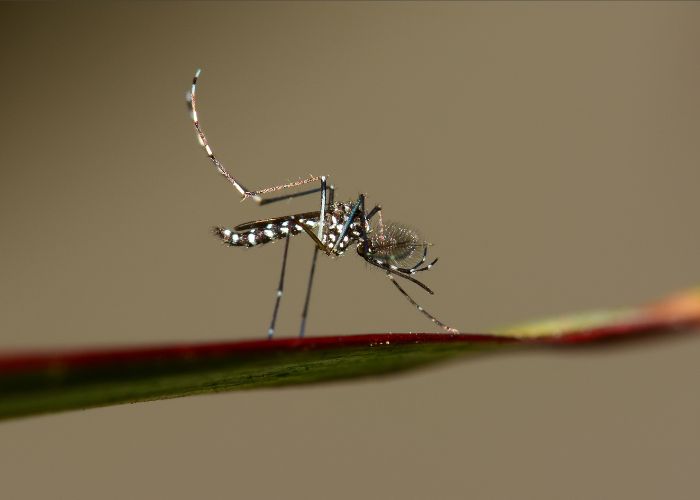BARCELONA – With global warming, it is also getting warmer in southern European areas. Tropical diseases thrive at higher temperatures. Cases of Dengue fever, Crimean Congo fever and West Nile virus are now also occurring in Spain.
These diseases are typical of warm, tropical countries. However, mosquito bites have been making a comeback since early October. Normally, autumn does not attract these insects. But with the continuing higher temperatures, the situation is changing. And mosquitoes can transmit diseases. The more tropical it gets, the more Spain has to deal with diseases from warm countries.
Related post: Significant increase in mosquitoes that can transmit West Nile virus
This summer, two cases of Crimean Congo haemorrhagic fever were diagnosed in western Spain, in the province of León. The bite of a tick caused the transmission of this disease that is quite known in Africa, the Balkans and the Middle East. Crimean Congo fever has now been added to the list of diseases in Spain. At the very top is dengue fever. It has existed in Spain since 2018, but with the increasing spread of mosquitoes, the situation is becoming more worrisome. The insects can cause the return of Zika, Chikungunya and even yellow fever.
Mosquitoes are doing well in Spain
“Mosquitoes have been around for many years, but with temperatures constantly rising, they are on the rise,” explains infectious disease specialist Joan Cayla. With the strong heat waves and the late summer almost equal to summer, mosquitoes and ticks are doing well in Spain. “Mosquitoes have been active for months now, while we had none before, certainly not in October,” Tomàs Montalvo, head of the mosquito monitoring program at the Agency for Public Health, told Catalan media.
Mosquitoes: 82 risk areas in Barcelona
This Agency has also identified 82 areas at risk of mosquito spreading in Barcelona. The neighbourhoods of Sants-Montjuïc, including Poble Sec, Putxet and Farró, are the hardest hit. The presence of mosquitoes depends on the ambient temperature and the presence of water. Once, people only had to fear an irritating itching after a bite, but it is becoming increasingly important to prevent mosquito bites due to the possible transmission of tropical diseases.
Related post: Mosquito that can transmit West Nile virus located in Catalonia
Tiger mosquito
Of the 62 existing species in Spain, it is the tiger mosquito that is the most concerning. It was first detected in 2004 in Barcelona and can carry 22 viruses simultaneously. The most common? Dengue, Zika and Chikungunya. About the number of cases of dengue fever, also called tropical flu, the Spanish infectiologist says: “I don’t have the official figures in Spain, but there are probably many”. And it is precisely mosquitoes that spread this disease. Since there is more and more travel worldwide.
More transmission through travel
“Nowadays it is much easier to travel to other countries. There are also many wars and the Covid crisis. All of this causes people to exercise more and bring diseases with them,” said researcher Joan Cayla. Dengue fever is best known in Latin American countries such as Cuba. People bring the virus to Europe where it then creates “indigenous cases”. People who contract the virus through a bite, without having travelled. The result is symptoms such as fever, aches and headaches for 3 to 14 days.
Possibly also yellow fever back
That’s not all. Yellow fever is not excluded. Spain had been rid of this disease since the 19th century. “It’s possible,” admits Joan Cayla. “Yellow fever is a disease of warm countries, but with the rise in temperatures, the atmosphere is now favourable for them here too.”
Ticks
Yellow fever would then be added to the West Nile fever, which was present in Andalusia for a short time. And that was without counting the insects that don’t fly. Since this summer, ticks have also brought back Crimean Congo fever. Spain is gradually acclimating to African and South American diseases.


